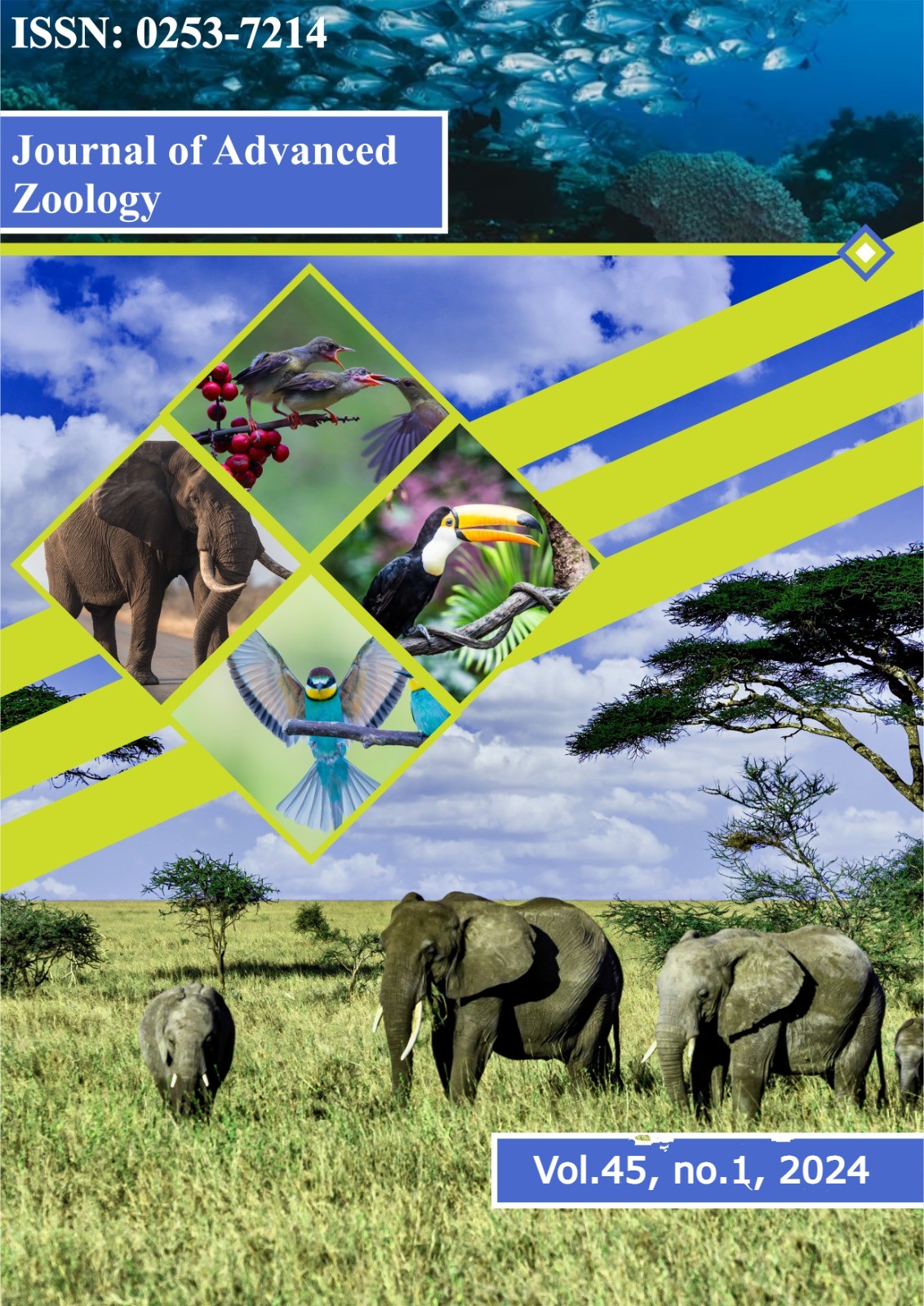Bioinventory And The Associated Ecosystem Developed Inside The Mandhip Khol Cave Complex
Main Article Content
Abstract
For any fauna, the unusual and extreme geophysical characteristics of any subterranean cave demand many biological adjustments to establish a population in it. In the present study, the bioinventory of Mandhip Khol cave Complex has been done. This cave complex has two identical subterranean passages; one wet passage, and another dry passage, so it is interesting to know the types of fauna it harbours. The tabulated results indicated that both the passages harbour mostly the same species, except some extra accidental visitors were found in the wet passage which enters the cave when the water level increases in it. Further, a bat species has been noted, which is new for the caves of Chhattisgarh, India.
Downloads
Article Details

This work is licensed under a Creative Commons Attribution 4.0 International License.
References
Banafar, A. & Biswas, J. (2016). Hathipol: biodiversity of a Tunnel ‘Cave’ of Chhattisgarh, India. Ambient Science, 3(01), 55-57.
Biswas, J. (2009). The biodiversity of Krem Mawkhyrdop of Meghalaya, India, on the verge of extinction. Current Science, India, 96(7), 904-910.
Biswas, J. (2010). Kotumsar cave biodiversity: A review of cavernicoles and their troglobiotic traits. Biodiversity and Conservation, 19(1), 275-289.
Biswas, J. (2014). Occurrence and distribution of cave dwelling frogs of Peninsular India. Ambient Science, 1, 17-25.
Biswas J (2022). Biospeleology: The Biology of Cave Habitats from India. In: Cave Science: Insights from the Indian Subcontinent. Pub. by: National Cave Research and Protection Organization, India (pp. 53-68).
Biswas, J., & Harries, D. (2011). Krem Bylliat: The Harbour of Precedent Cavernicolous Representatives from the Jaintia Hills, Meghalaya, India. Journal of Biological Sciences, 11 (7), 459-465.
Biswas, S. & Banafar, A. S. (2017). Bildwar Gufa: a derelict cave on the way of natural rehabilitation centre for microchiropteran (Bats). Ambient Science, 04(2), 42-43.
Biswas, J. & Shrotriya, S. (2011). Dandak: a mammalian dominated cave ecosystem of India. Subterranean Biology. 8, 1-8.
Gruia M, Iavorschi V, Sarbu SM (1994) Armadillidium tabacarui(Isopoda: Oniscidea: Armadillidiidae), a new troglobitic species from a sulfurous cave in Romania. Proc Biol Soc Wash (ISOPODA) 107:699–706.
Gunn, J. (2004). Encyclopedia of Caves and Karst Science. Pub. by: Taylor & Francis. P. 928.
Harries, D., & Ware, Fiona & Fischer, Christian & Biswas, J. & Kharpran-Daly, B. D. (2008). A review of the biospeleology of Meghalaya, India. Journal of Cave and Karst Studies, 70 (3), 163-176.
Jager, P. (2005). New large-sized cave-dwelling Heteropodaspecies from Asia, with notes on their relationship (Araneae: Sparassidae: Heteropodinae). Rev. Suisse Zool., 112: 87-114.
Jaiswara, R., Dong, J., Ma, L., Yin, H. & Robillard, T. (2019) Taxonomic revision of the genus Xenogryllus (Orthoptera, Gryllidae, Eneopterinae). Zootaxa. 2019 Jan 17;4545(3):301-338.
Kumar, A., Prasad, G., Biswas, S. & Biswas, J. (2022): The Ecotone of River Cave, a Boon for the Fisherman: a Case Study of Mandhip Khol Cave Complex of Chhattisgarh, India. Ambient Science, 09(3):57-58
Kumar, A., Prasad, G. & Biswas, J. (2023). Impact of high anthropogenic activities on cave biodiversity: a case study of Mandhip Khol of Chhattisgarh, India. Ambient Science, 10(1), 12-14.
Prasad, G., Kumar, A., Laxmikant & Biswas, J. (2023). Biospeleological Study of the Phuljhar cave of Gariaband, Chhattisgarh India. Tuijin Jishu/Journal of Propulsion Technology, 44(4): 1152-1162.
Racovitza, E. G. (1907). Biospeleologica I Essai sur les problemes biospeleologiques. Archives de Zoologie Paris Ser, 4, 6 372-388.
Ruggieri, R. and Biswas, J. (2011). The karst Mandhip Khol-Phyton cave complex in the lenticular limestone interactions of the metamorphic Chhatrela formation (Chhattisgarh, India). ActaCarsologica. 40(1): 7-15.
Schultz, G. A. (1970). Descriptions of New Subspecies of Ligidium elrodii (Packard) comb. nov. With Notes on Other Isopod Crustaceans from Caves in North America (Oniscoidea). The American Midland Naturalist, 84(1):36–45.
Sherriffs, W. Rae (1935). "Hong Kong spiders II" (PDF). The Hong Kong Naturalist. 6 (2).
Sket, B. (2008). Can we agree on an ecological classification of subterranean animals? Journal of Natural History, 42(21–22), 1549–1563.
Smith, M. A. (1935). The Fauna of British India, Including Ceylon and Burma. Reptilia and Amphibia. Vol. II.—Sauria. London: Secretary of State for India in Council. (Taylor and Francis, printers). xiii + 440 pp. + Plate I + 2 maps. (Psammophilus blanfordanus, new combination, p. 210).
Vandel, A. (1965). Biospeleology: The Biology of Cavernicolous Animals. Pub. by: Pergamon Press. P. 552.
Wallace, H. K. (1937). The use of a headlight in collecting nocturnal spiders. Entomological News, 48: 160-161
